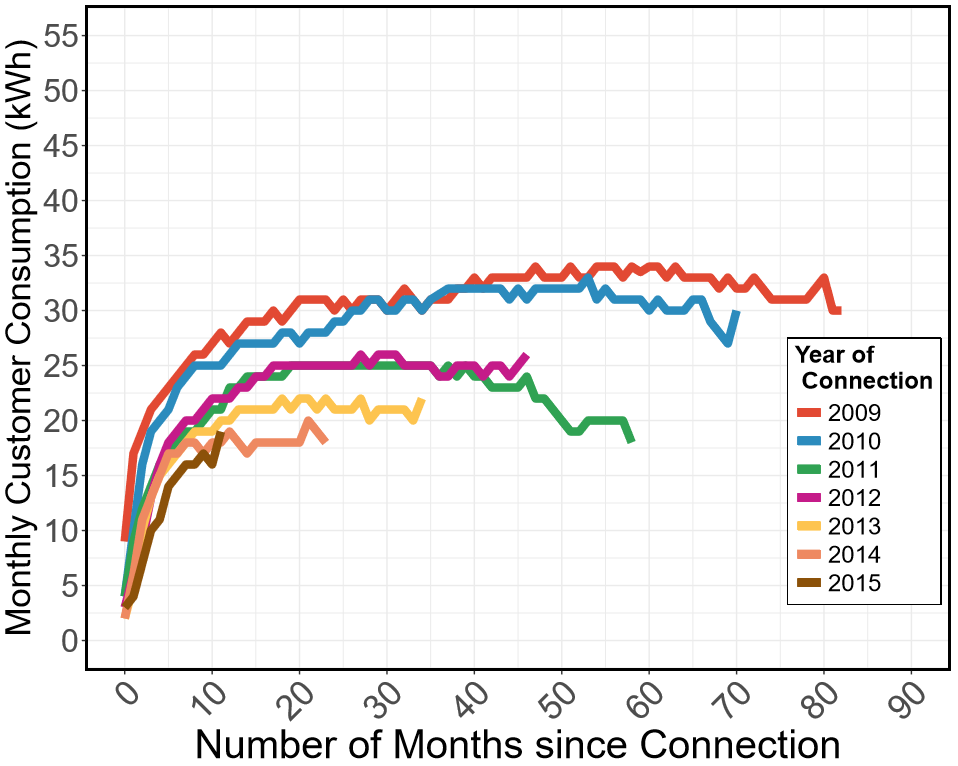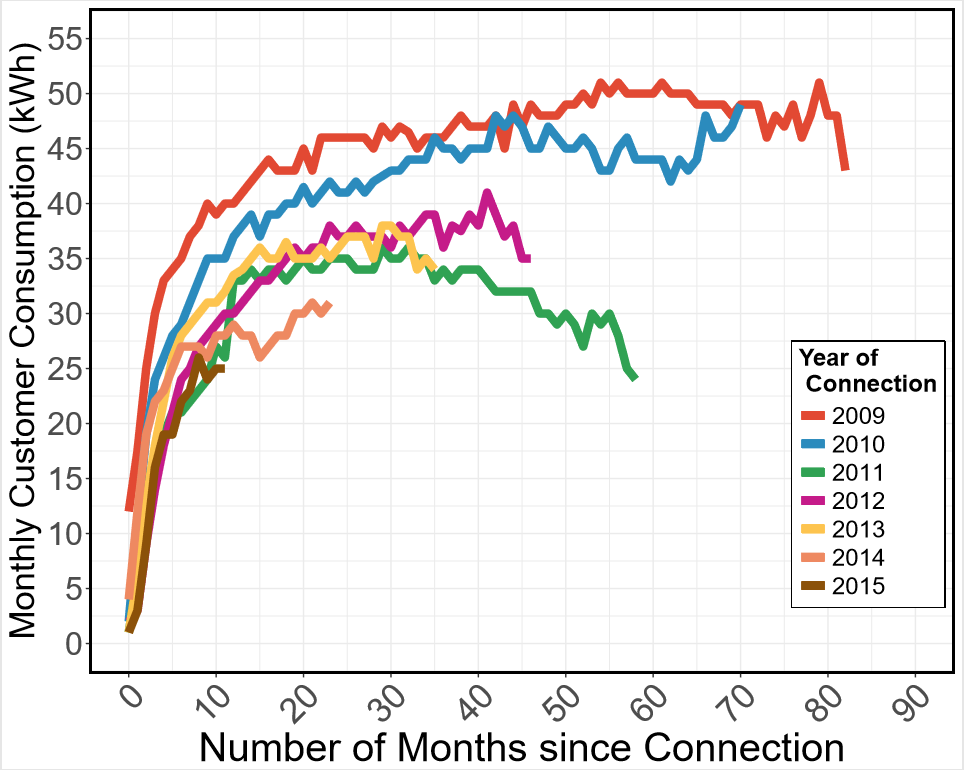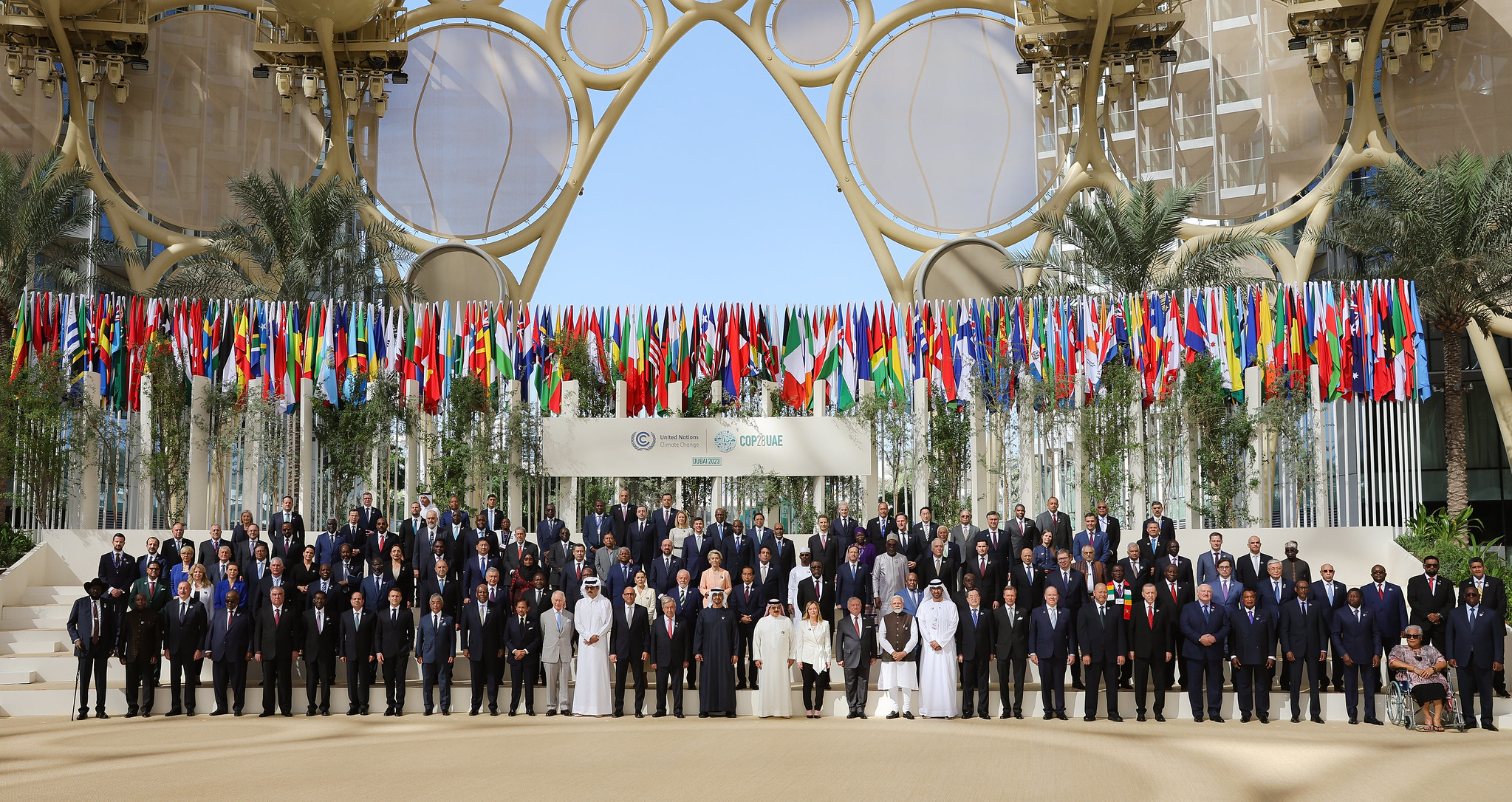Kenya has become ground zero for many energy policy debates. The country has Africa’s largest wind farm, is considering coal and nuclear options, and has been among the most aggressive in pushing for universal energy access.
Eighteen months ago, we blogged here about Kenya’s superfast electricity connection rate. The country had grown from 27 percent to 55 percent access in just three years, putting themselves on a fast-track toward near universal access by 2020. While this lightning progress was exciting, new research suggests that aggressive expansion may come with downsides, too.
Jay Taneja—formerly at the IBM Research Lab in Nairobi and now an engineering professor at the University of Massachusetts at Amherst and a fellow at the Energy for Growth Hub—studies energy infrastructure systems. He has a unique dataset of Kenyan utility customers and can analyze consumer data in a way never done before.
If You Build It, Will They Consume? Key Challenges for Universal, Reliable, and Low-Cost Electricity Delivery in Kenya, a new paper CGD commissioned from Taneja, is a reality check to our previous enthusiasm. He finds that the recently-connected Kenyan consumers are actually not consuming much at all, far below the level needed to economically justify the costs of the grid connection.
Rural Connections (Left) and Urban/Peri-Urban Connections (Right)
Among urban consumers, those connected in 2009 now steadily use about 50 kWh/month. Those connected in the years since are peaking earlier and earlier each year, and are plateauing at a lower level than each previous new cohort. The data for rural customers shows an even earlier peak and lower consumption levels.
This all fits with “last mile” expectations—the closer you get to universal access, the more costly it is and the more you are likely to reach lower income consumers who will buy less electricity. But Taneja raises important concerns about the systemic effects of this trend, including the impact on reliability for higher-paying anchor customers and the overall financial health of the public utility.
This analysis is an important reminder that a connection isn’t an end in itself. The real goal of electrification is to enable energy consumption for living better and more productive lives. For policymakers deciding how to allocate scarce resources and keep the whole system thriving, we need a better understanding of latent demand, where it’s located, and how demand can be stimulated.
He concludes:
In total, the challenge of more cost-effectively matching infrastructure to consumer electricity needs requires honest assessments of electricity consumption, a clearer appraisal of regional developments in electricity, and more flexible deployments of the different technologies and business models available and emerging.
Read the whole terrific paper here.
CGD blog posts reflect the views of the authors, drawing on prior research and experience in their areas of expertise.
CGD is a nonpartisan, independent organization and does not take institutional positions.







